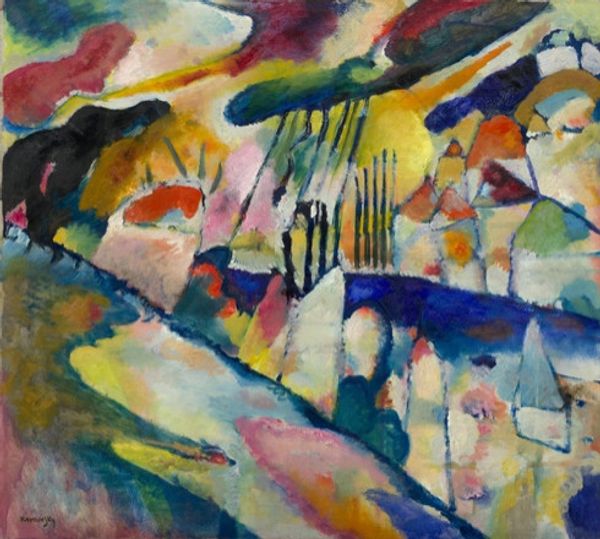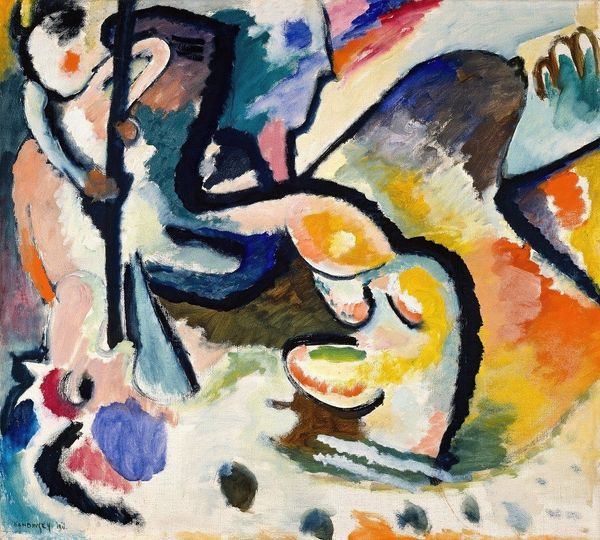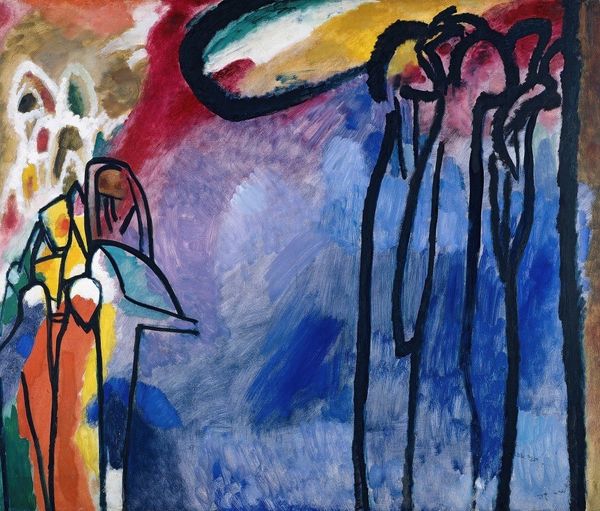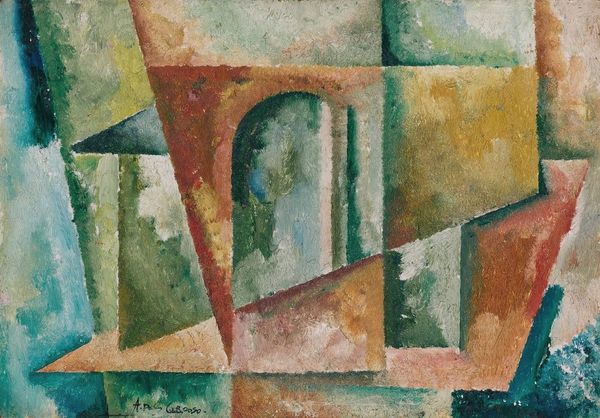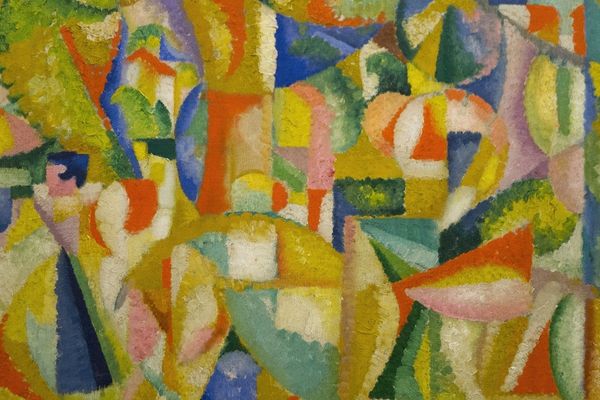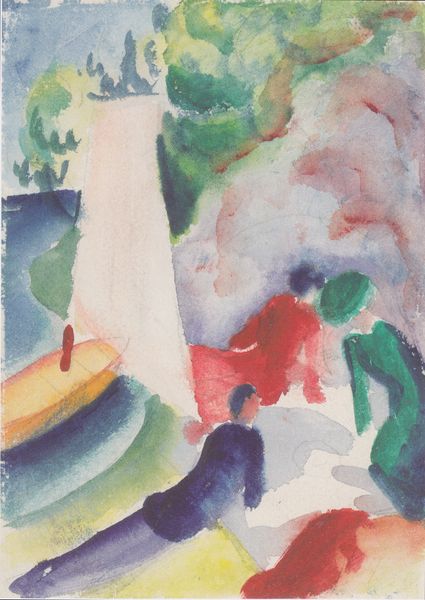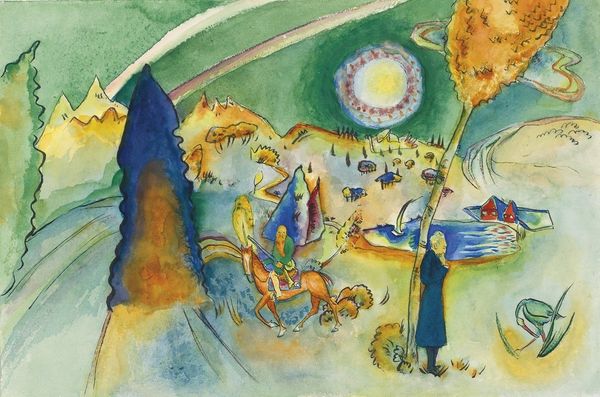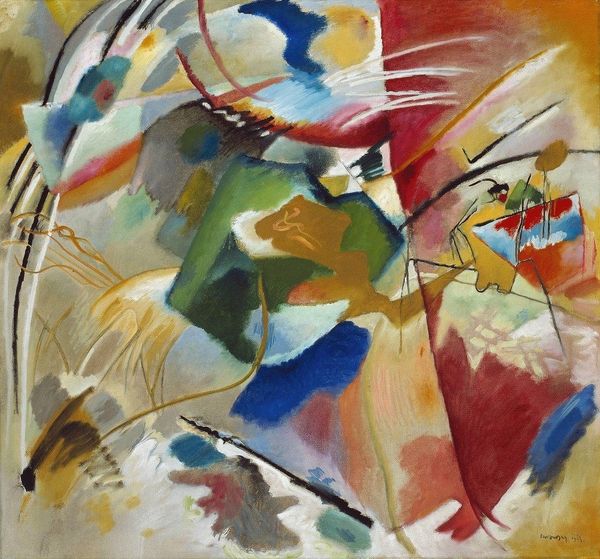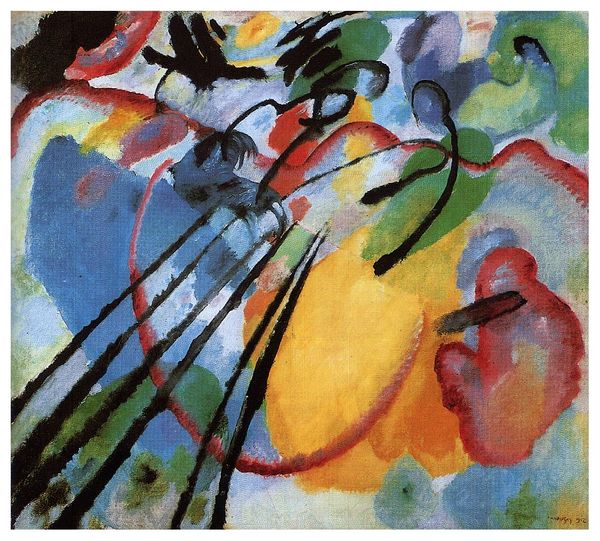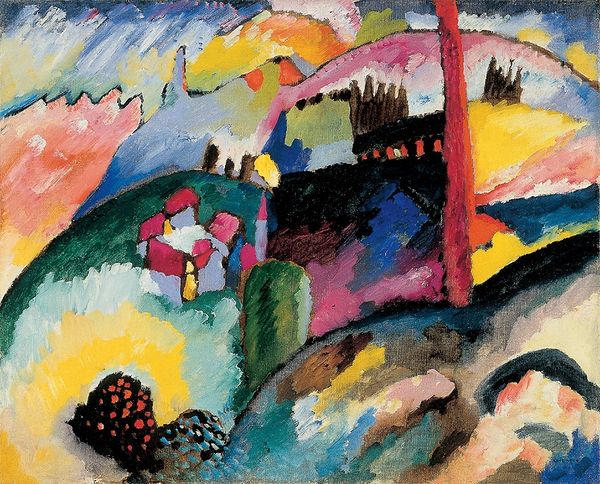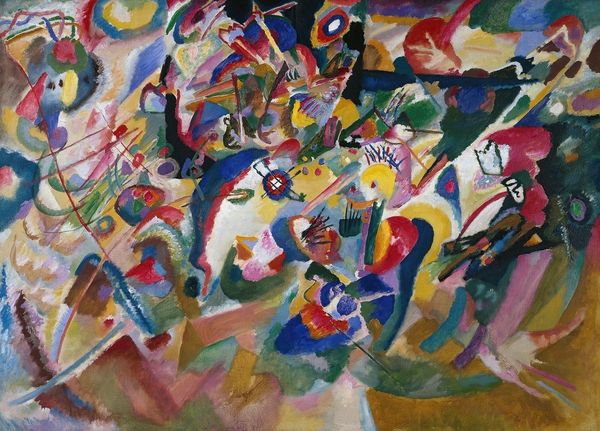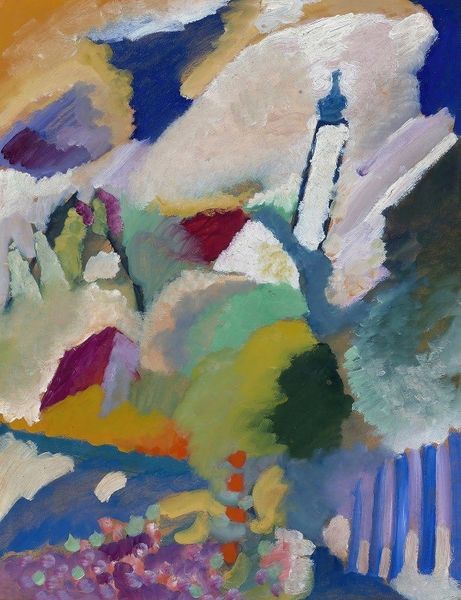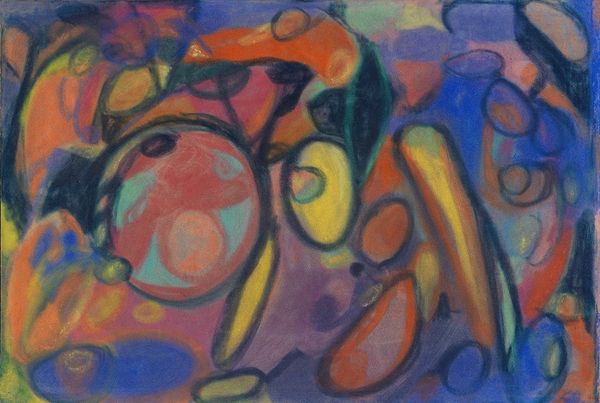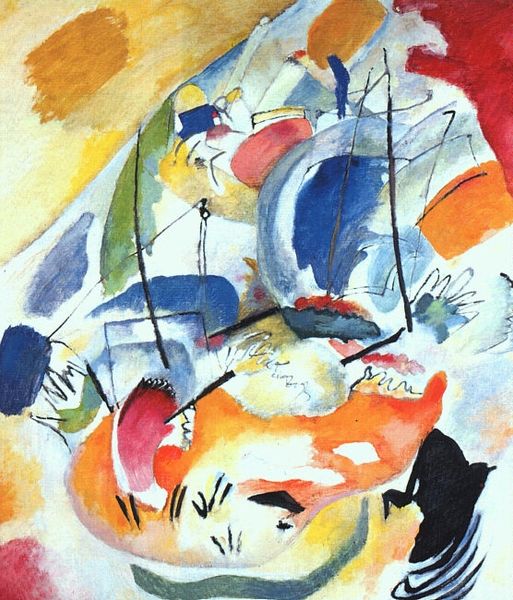
oil-paint
#
abstract painting
#
oil-paint
#
landscape
#
oil painting
#
geometric
#
expressionism
#
abstraction
#
expressionist
Copyright: Public domain
Curator: This is Wassily Kandinsky's "Landscape with Church," an oil painting created in 1913. Look closely and you'll notice how Kandinsky starts moving away from pure representation. Editor: My first impression is how dreamlike this feels. The colours are muted and almost pastel, creating a hazy, ethereal quality. Is it truly a landscape? It feels more like a memory of one. Curator: Indeed, by 1913, Kandinsky had become fascinated with abstract art's possibilities to communicate interior realities. Churches in art are typically symbols of spiritual community, order, and sometimes, institutional power. Given his increasingly abstract approach, I suspect the church functions less as a building and more as a beacon for personal transcendence. Editor: That resonates strongly! I am interested in that spire or tower that looks off center. Note how Kandinsky's use of colour contributes to a flattening effect. Space is compressed; forms are suggested rather than defined. Were his contemporaries receptive to his techniques at this time? Curator: The Expressionist movement was taking root, so it aligns perfectly to the exploration of non-objective representation! These artists used extreme distortions of form and colour to express raw emotions. What Kandinsky achieved here in "Landscape with Church," reflects a deep sense of inner feeling given outer expression through color and form. Editor: Looking at it from a broader perspective, it also hints at a societal shift away from traditional religious frameworks. Art served a public function. Abstraction and Expressionism mirrored social transformations toward more personalized ideologies. What appears purely stylistic surely must reveal underlying beliefs about faith and the role of the sacred. Curator: You are correct. Consider that Wassily was deeply invested in the theosophical movement at this time and how such beliefs encouraged subjective spirituality through colors and geometry, both key visual elements present. I believe that it's fascinating how the piece prompts reflection not just on individual faith, but on the social narratives surrounding spiritual exploration during his time. Editor: So well articulated! Contemplating its historic moment next to its spiritual undercurrents encourages another layer of inquiry into a cultural phenomenon and collective pursuit of meaning during uncertain times. Curator: Precisely. What an important discussion and lens we have here, through this vibrant “Landscape with Church.”
Comments
No comments
Be the first to comment and join the conversation on the ultimate creative platform.
